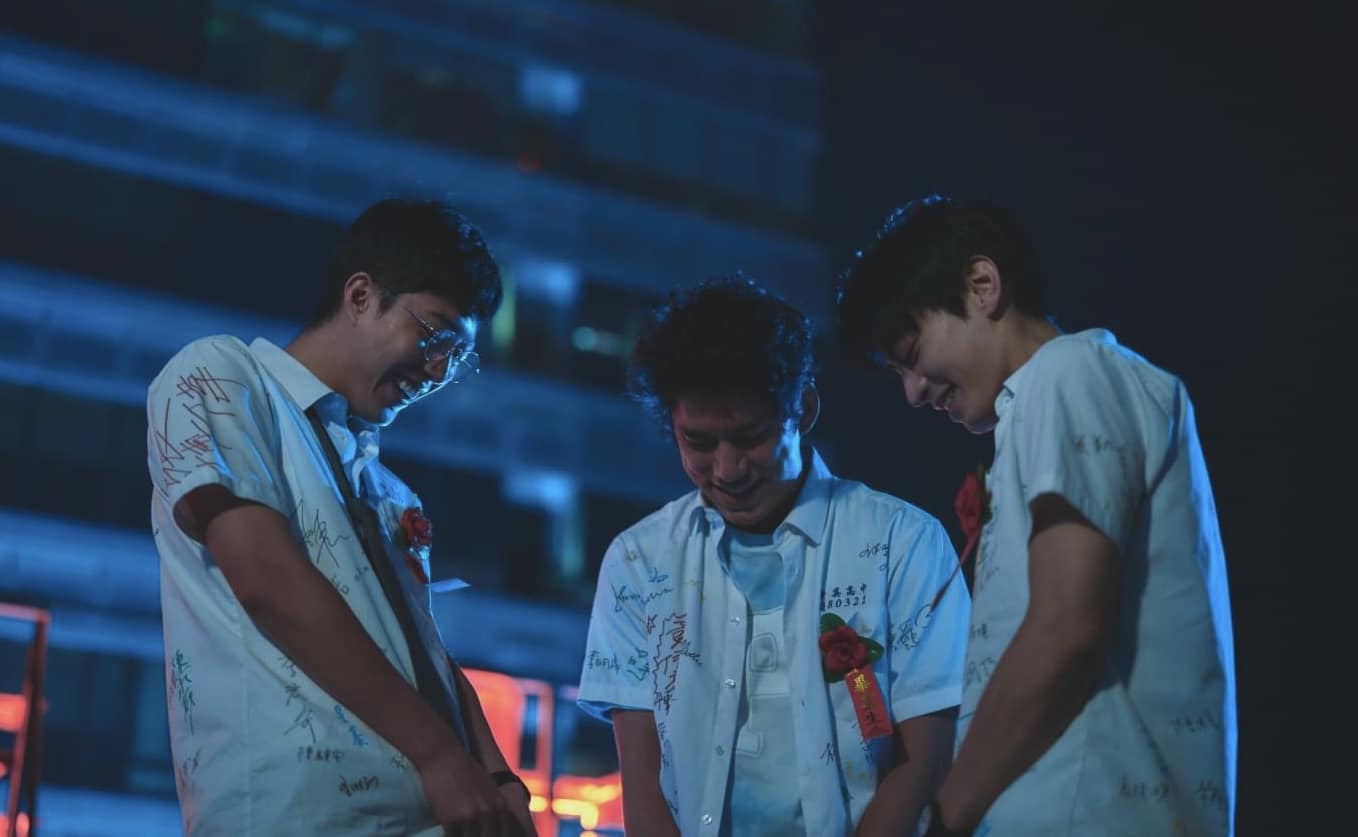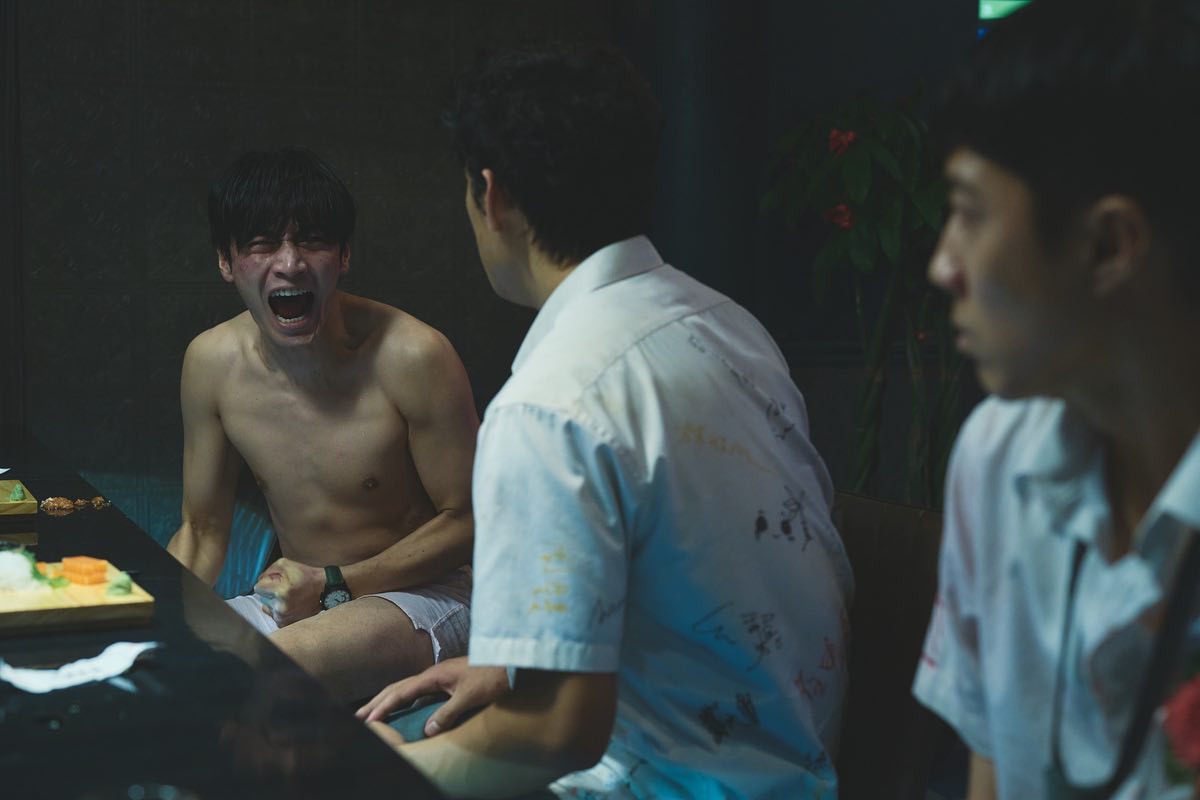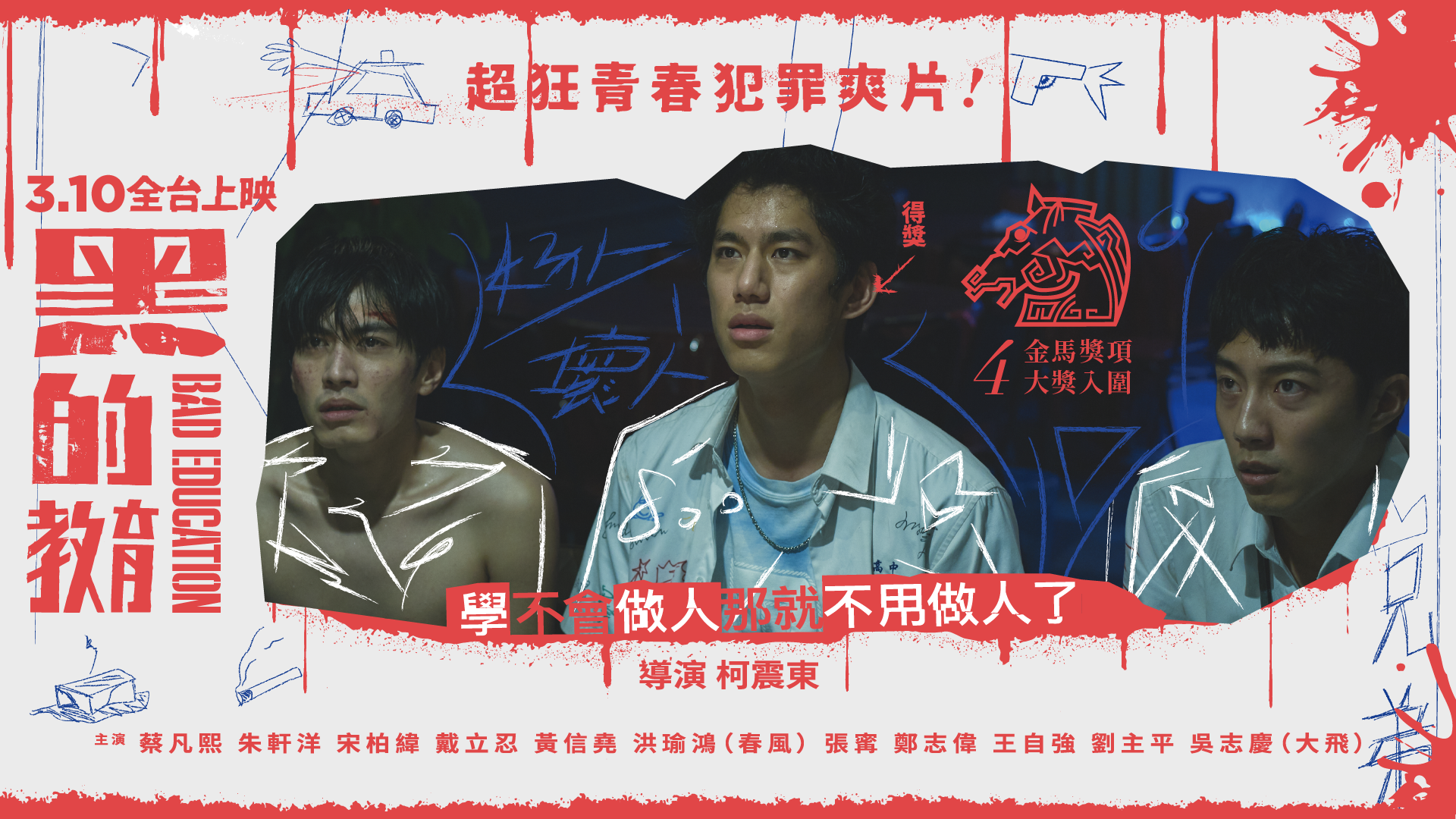by Brian Hioe
語言:
English
Photo Credit: Bad Education/Facebook
ACTOR KAI KO’S directorial debut, Bad Education (黑的教育), is a capable film with many merits. Though still entertainment fare at the end of the day, much is to be praised about the movie, which like many hit Taiwanese movies in past years has a script penned by novelist Giddens Ko.
Bad Education follows a group of three high schoolers through the course of a night shortly before graduation. The three begin on a rooftop, drunkenly confessing their deepest and darkest secrets to each other. One of the three confesses to sexually assaulting a mentally disabled woman, while the other confesses to murdering a homeless man. The third–the geeky Chang Powei–only confesses to having seen his father sleeping with another woman one night.
Deciding that this is not enough, the three put him up to pranking a gangster. Subsequently, the three flee into the night. This is the start of their misadventures, with the three shortly coming across a taxi driver sexually assaulting a woman, and the police at a traffic stop.

Photo credit: Bad Education/Facebook
A good deal of Bad Education’s plot involves its protagonist trio fleeing from police and gangsters in hot pursuit. The chase scenes are themselves unremarkable, but where Bad Education performs quite strongly stylistically is with regard to its set pieces. This begins from the film’s first shot, with the scene of the three protagonists confessing their past crimes to each other creatively lit with red neon lights. The film’s climax in a seafood restaurant, occupying the film’s last third of the film, is also well-realized, featuring strong acting from Leon Dai as a gang boss. Indeed, very little actually happens in the film, with the movie dependent on the strong atmosphere of each set piece as it moves from place to place.
In many ways, Bad Education continues the preoccupation of much Taiwanese film in recent years on violent crime committed by young people. This has ranged from representing young people to commit crimes as unrepresentable, unspeakable, and irrational evil–as in The Painting of Evil–to more humanistic takes such as Goddamned Asura. In particular, this has often been inspired by real incidents in Taiwanese society in the past decade, such as the Cheng Chieh subway stabbing and the “Little Lightbulb” murder.
But Bad Education takes a different tack, in noting that these were all cases of violent crime committed by young men. As such, Bad Education puts front and center the male bond between its three protagonists, in which the protagonists prove willing to commit crimes in order to grandstand in front of each other, as a way to be impressive and show dominance. This is flagged from the opening, showing the three protagonists urinating together on a bottle of Taiwan Beer.
Having the protagonists quickly come into conflict with gangsters initially appears to be a quick and easy way for the movie to have its protagonists get into trouble, to advance the plot. However, this turns out to be a very deliberate and strategic choice by the directors. After all, male-dominated organized crime is nothing else if not a homosocial institution.
The movie suggests, then, that when one extrapolates upward from juvenile high school boy antics, this is why social institutions such as gangs exist. Random acts of violence, then, proves not only a form of macho showing off, but also a form of homosocial bonding.

Photo credit: Bad Education/Facebook
But, as it is a film in line with these other movies about acts of violence committed by young people, the film aims to show that the potential for evil exists in all people, rather than simply being a matter of some people being innately good and others being innately evil. Instead, the film suggests that most people simply go with the flow, and can be shaped by their social circumstances.
As with other Taiwanese movies in a similar vein, the film is rather lacking in female characters. The only two female characters are both victims of sexual assault, though only the woman that the protagonists come across in a taxi has any real character development. Nonetheless, her depiction proves problematic, in that she is initially depicted sympathetically yet later serves as comic relief due to her drunken rambling in the manner of a spirit medium. In this sense, the film can be seen as failing to take incidents of sexual assault particularly seriously.
All in all, Bad Education is not exactly a work of high art. But, as entertainment, the film works well enough.



